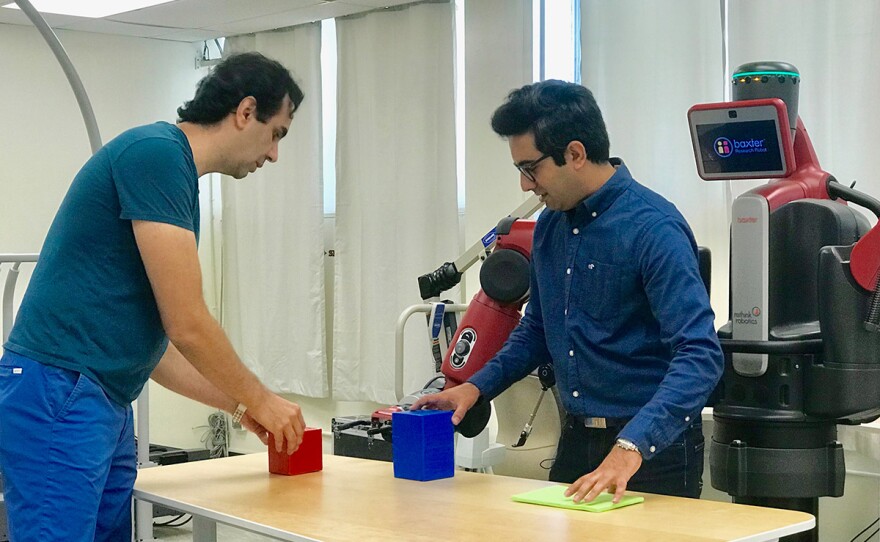Robots may soon be able to help people suffering from unsteadiness. That is the goal of researchers at San Diego State University, who are creating technology that could help people find stability.
They have been working with a robot called Baxter. It's been programmed to model the human body, specifically a person with Parkinson’s disease — a brain condition that can cause shaky movement, said Dr. Peiman Mousavi, the lead researcher at SDSU.
“Two of my uncles — they had Parkinson’s," he said. "And due to aging brain they were suffering from the jerky motion of the hands."
Mousavi and his team have been collecting data from this robot to figure out where this unsteadiness — or time delay between brain signals and muscle motion — comes from. Mousavi’s research colleague at the university, Mostafa Bagheri, has been working on the computer program, which can monitor the robot.
“It will pick up the object," Bagheri said. "The red object is going to pick up the object and put on the target and there is a delay at the beginning. As you can see it doesn’t move."
With computers, Bagheri said, the researchers can analyze why that delay occurred before and then create a controller, or code, that stops the delay from happening again.
“But after a while. the programming starts to compensate that delay and make the path as smooth as possible," he said
The controller is technically a compensator, which Mousavi said, "means it's compensating the time delay. So it’s going to predict the future.”
"It says the mug, for example, must be here, but you’re still here," he said. "So I’m going to send a signal to the muscles to compensate this time interval to avoid instability in the motion."
The hope, he said, is that this technology can eventually be used to create a chip that can be implanted in the human brain.
Besides humans, Mousavi said this technology could help in other disciplines. For instance, in solving time delays between a command station signal coming from Earth to a rover on Mars.








